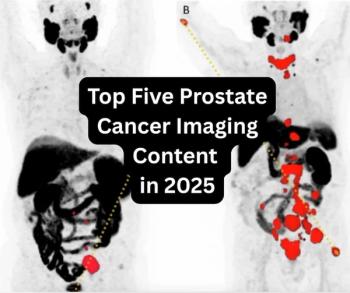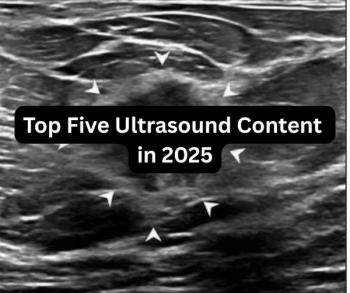
PET/CT predicts treatment response in lymphoma patients with bony metastases
A Johns Hopkins University study added to the growing base of evidence showing that quantitative PET/CT can predict the response to treatment in patients with bone metastases from lymphomas.
A Johns Hopkins University study added to the growing base of evidence showing that quantitative PET/CT can predict the response to treatment in patients with bone metastases from lymphomas.
Approximately one in five patients with non-Hodgkin's lymphoma and one in 10 with Hodgkin's disease suffer from some form of bone marrow involvement, which has prognostic implications. CT has become a preferred imaging tool for the staging of these patients, but it has limited value in the assessment of lymphomas affecting the bones, liver, or other organs. PET has been proven useful for staging and monitoring response to treatment in this setting, but it lacks anatomic accuracy.
PET and CT together enable a more accurate assessment of response to therapy in patients with bone marrow metastases from lymphoma, said principal investigator Dr. Behnaz Goudarzi, a nuclear medicine fellow at Johns Hopkins.
Goudarzi and colleagues retrospectively reviewed PET/CT reports from 1100 patients with lymphoma. They identified a subset of 28 patients with aggressive lymphoma who had bone lesions with high FDG uptake, using the Response Evaluation Criteria in Solid Tumors (RECIST) guidelines. The investigators compared standardized uptake values (SUV) and Hounsfield unit values (HUV) for these lesions before and after therapy.
They found evidence of treatment response in the form of significant decrease in FDG uptake and increase in tumor density. They presented their findings at the 2007 RSNA meeting.
A comparison of HUV before and after therapy showed no significant difference on average (174.22 versus 158). A similar quantitative assessment for SUV yielded before and after figures of 7.44 and 3.47. The decrease was statistically significant (p<0.001).
The researchers observed a correlation between increasing HUV and increasing SUV before therapy, but it was not statistically significant. After therapy, however, they noted a significant association between increasing HUV and decreasing SUV (p = 0.03).
The researchers noted the small patient population sample as the study's main limitation. The positive correlation between tumor density and metabolic activity before therapy and the inverse correlation after therapy, however, suggest a role for PET/CT in the assessment of treatment response. Further study with a larger group may validate these findings, Goudarzi said.
"It may be possible to predict response of bone involvement in lymphoma by using the PET/CT criteria," she said.
For more information from the Diagnostic Imaging archives:
Newsletter
Stay at the forefront of radiology with the Diagnostic Imaging newsletter, delivering the latest news, clinical insights, and imaging advancements for today’s radiologists.




























